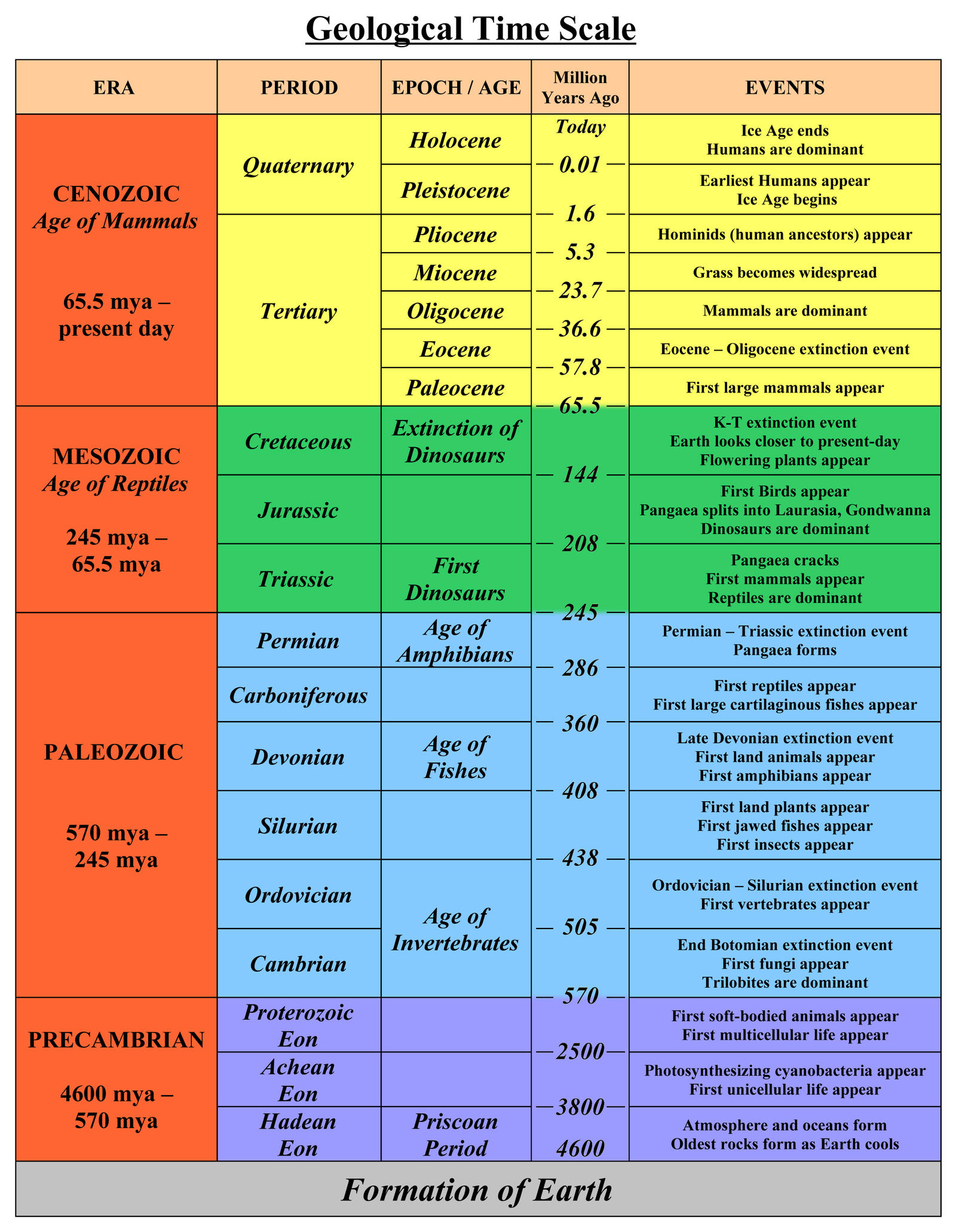Recently in our class we have been working on a geological time line of the Earth's lifespan. And in this blog post I will tell you about the 3 most crucial events to take place on planet Earth (in my opinion).
First is the Cretaceous period or the period where the dinosaurs went extinct. I believe this is one of he most important periods in the history of earth. The extinction of the dinosaurs showed us humans that a very powerful spices can still be completely destroyed due to random chance or just plain luck.
Second is the Pleistocene age where the first human was believed to be created. This age shows that humans were once in the middle of the food chain and struggled for survival. And today we try and save other animals.
The last Period of importance is the Proterozoic Eon where the first multicellular shows up on the earth. With out this Eon life as we know it would never happen.
The scale of Earths time line is tremendous and humans only take up 200,000 years of the 4.6 billion years of earths time line and it is only growing. And we still manage to mess it all up in that short period of time. If we do not kill our self from climate change then something else will. It is only matter of time.




